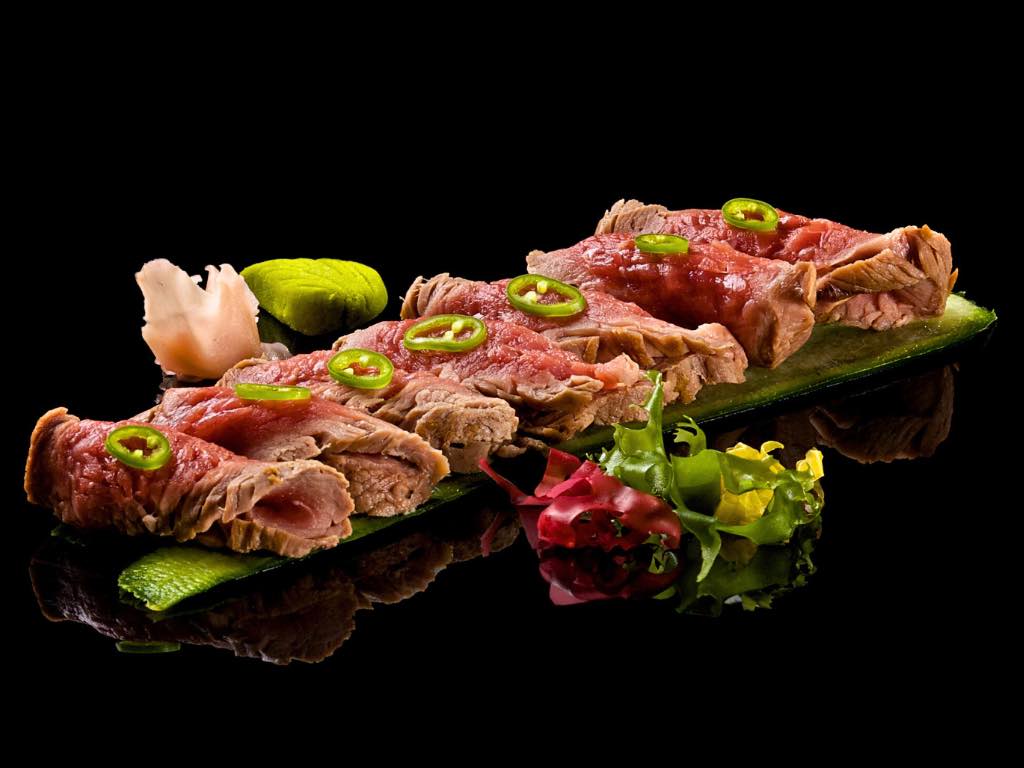
Beef Tataki: A Masterclass in Japanese Culinary Elegance
|
|
Time to read 5 min
Welcome to One Stop Halal!
Written by: Najma A.
|
|
Time to read 5 min
Japanese cuisine is known for its delicate balance of flavors, respect for ingredients, and artful presentation. Among its many dishes, "Beef Tataki" is a sublime example of how simplicity can yield complex and unforgettable tastes. A dish that bridges the gap between raw and cooked, beef tataki offers a unique culinary experience that captures the essence of Japanese cuisine. This article will explain beef tataki's origins, preparation, and serving, offering tips and insights to help you create this elegant dish in your kitchen. Whether you're a seasoned chef or a home cook looking to expand your culinary repertoire, this guide will provide everything you need to know about beef tataki.
The success of tataki beef hinges on selecting the proper cut of beef. The ideal cut should be tender, flavorful, and have a good balance of fat. Here are some of the best cuts for making beef tataki recipe:
When selecting your beef, look for high-quality, well-marbled meat. The marbling will enhance the flavor and tenderness, making your beef tataki truly exceptional.
The hallmark of beef tataki is its perfectly seared exterior contrasted with a rare, tender interior. Achieving this balance requires precision and attention to detail.
Once the beef has cooled, it's time to slice and plate your tataki. How you slice the beef can greatly impact the texture and overall experience of the dish.Thin Slices: Using a sharp knife, slice the beef against the grain into thin, even pieces. The slices should be thin enough to showcase the contrast between the seared exterior and the rare interior.
The beauty of beef tataki lies not only in the quality of the beef but also in the accompanying sauces and garnishes. These elements add flavor and complexity to the beef tataki, making each bite a delightful experience.
Wagyu Beef Tataki is typically served as an appetizer or a light main course. It can be enjoyed independently or as part of a larger meal. When serving beef tataki, consider the following tips:
Welcome to the Home of the Halal Beef. We carry various beef cuts that are hard to find elsewhere. We deliver to your doorstep anywhere in the United States within 1-2 business days.
Beef tataki is more than just a dish; it's a celebration of Japanese culinary traditions and the beauty of simplicity. With the right ingredients, techniques, and creativity, you can bring this exquisite dish to life in your kitchen. Whether you choose to stick with the classic preparation or explore new variations, the key to success lies in respecting the ingredients and allowing the natural flavors of the beef to shine. As you master the art of beef tataki, you'll discover that this dish offers endless opportunities for culinary exploration and enjoyment. So, gather your ingredients, heat your pan, and embark on a culinary journey that will leave your taste buds singing with delight. Beef tataki is not just a meal; it's an experience—a true testament to the elegance and depth of Japanese cuisine.

© 2025 One Stop Halal, Inc.